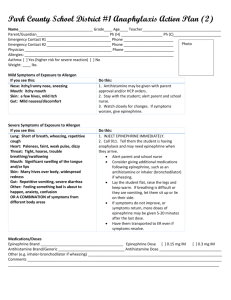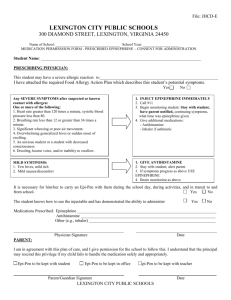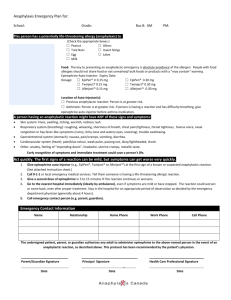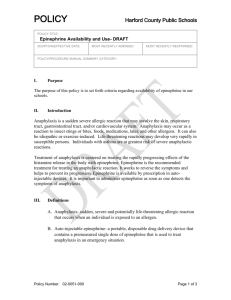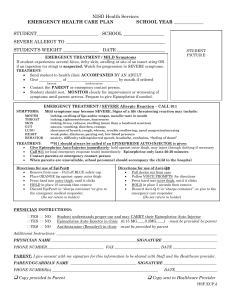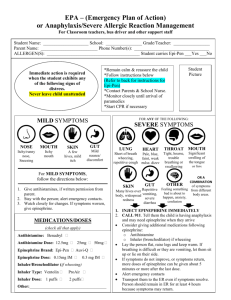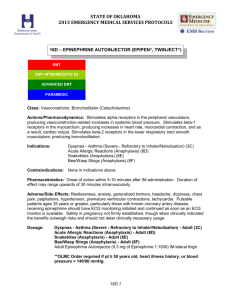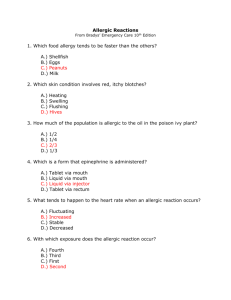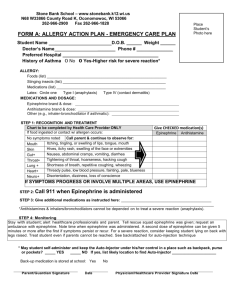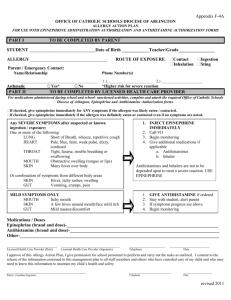Memorandum 013
advertisement
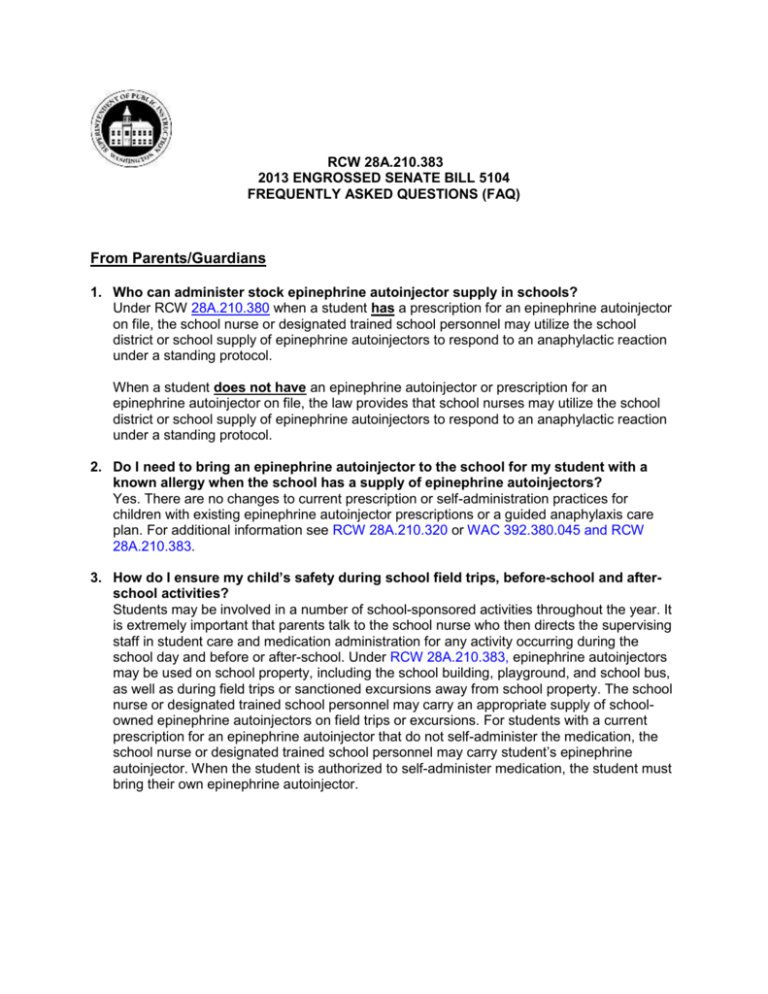
RCW 28A.210.383 2013 ENGROSSED SENATE BILL 5104 FREQUENTLY ASKED QUESTIONS (FAQ) From Parents/Guardians 1. Who can administer stock epinephrine autoinjector supply in schools? Under RCW 28A.210.380 when a student has a prescription for an epinephrine autoinjector on file, the school nurse or designated trained school personnel may utilize the school district or school supply of epinephrine autoinjectors to respond to an anaphylactic reaction under a standing protocol. When a student does not have an epinephrine autoinjector or prescription for an epinephrine autoinjector on file, the law provides that school nurses may utilize the school district or school supply of epinephrine autoinjectors to respond to an anaphylactic reaction under a standing protocol. 2. Do I need to bring an epinephrine autoinjector to the school for my student with a known allergy when the school has a supply of epinephrine autoinjectors? Yes. There are no changes to current prescription or self-administration practices for children with existing epinephrine autoinjector prescriptions or a guided anaphylaxis care plan. For additional information see RCW 28A.210.320 or WAC 392.380.045 and RCW 28A.210.383. 3. How do I ensure my child’s safety during school field trips, before-school and afterschool activities? Students may be involved in a number of school-sponsored activities throughout the year. It is extremely important that parents talk to the school nurse who then directs the supervising staff in student care and medication administration for any activity occurring during the school day and before or after-school. Under RCW 28A.210.383, epinephrine autoinjectors may be used on school property, including the school building, playground, and school bus, as well as during field trips or sanctioned excursions away from school property. The school nurse or designated trained school personnel may carry an appropriate supply of schoolowned epinephrine autoinjectors on field trips or excursions. For students with a current prescription for an epinephrine autoinjector that do not self-administer the medication, the school nurse or designated trained school personnel may carry student’s epinephrine autoinjector. When the student is authorized to self-administer medication, the student must bring their own epinephrine autoinjector. From School Staff 1. The new law allows schools to maintain a supply of epinephrine autoinjectors based on the number of students enrolled in the school. How can we determine what that amount is? OSPI is working with the pharmaceutical industry and other states with regulations about epinephrine in schools to determine ratios of epinephrine autoinjectors per students for different settings and activities. 2. If a student appears to be having an allergic reaction, but I am uncertain if the student was truly exposed to any allergen, what should I do? When a student has a prescription for an epinephrine autoinjector on file follow the care plan, treat the student immediately with epinephrine, and call 911. When in doubt, treat the student. Students may have a delayed reaction. Fatalities frequently occur because the epinephrine was delivered too late. When a student does not have an epinephrine autoinjector or prescription for an epinephrine autoinjector on file, the law provides that school nurses may utilize the school district or school supply of epinephrine autoinjectors to respond to an anaphylactic reaction under a standing protocol. If the school nurse is not available, unlicensed school staff should immediately call 911. 3. If a parent/guardian informs me their child may have an allergic reaction and requests I give an epinephrine autoinjector, what should I do? Inform the parent/guardian that by law, school policy and procedure, the school nurse directs the health care of students at school and during school-sponsored activities. Either the parent/guardian or school staff then informs the school nurse as soon as possible. The school nurse will assess and develop a health and treatment plan for the student. 4. Does the new law change current prescription or self-administration practices for children with existing epinephrine autoinjector prescriptions or a guided anaphylaxis care plan? No. 5. The new law requires that epinephrine prescriptions must be accompanied by a standing order for the administration of school-supplied undesignated epinephrine autoinjectors for potentially life-threatening allergic reactions. Where can I find resources regarding these standing orders? The Nursing Care Quality Assurance Commission and the Pharmacy Commission have requested and received stakeholder input on standing orders. They will be seeking input from the Medical Commission and other prescriber commissions/boards before development of an Advisory Opinion and/or Interpretive Statement on standing orders. 6. The new law refers to standing protocols under RCW 28A.210.300 which has nothing to do with standing protocols. Is this a mistake? Yes. ESB 5104 erroneously references RCW 28A.210.300. The correct citation is RCW 28A.210.380. The Legislature is considering SB 6013 to correct the error. 7. How can my school obtain free or donated epinephrine autoinjectors? The resources list below provides information that can help you obtain up to four free epinephrine autoinjectors. Resources More information is available on the Health Services webpage on the following: Sample WSSDA Anaphylaxis Prevention and Response policy Anaphylaxis Prevention and Response Policy and procedure Anaphylaxis Prevention and Response Procedure Sample Administration of Epinephrine by Autoinjector Employee Opt-out form Anaphylaxis Prevention and Response Employee Opt Out Form Guidelines for the Care of Students with Anaphylaxis Mylan/EpiPen support program: http://www.epipen4schools.com/ OSPI will provide additional resources as available to assist school districts and private schools in the implementation of this law.
